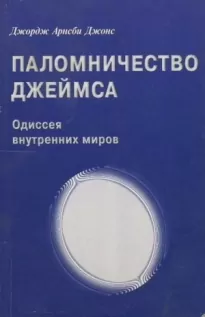Слепая физиология. Удивительная книга про зрение и слух

- Автор: Сьюзен Барри
- Жанр: Биология / Научная литература / Самиздат, сетевая литература
Читать книгу "Слепая физиология. Удивительная книга про зрение и слух"
50
L. Tychsen et al., “Phakic Intraocular Lens Correction of High Ametropia in Children with Neurobehavioral Disorders,” Journal of AAPOS 12 (2008): 282–289.
51
S. Thorpe, D. Fize, and C. Marlot, “Speed of Processing in the Human Visual System,” Nature 381 (1996): 520–522.
52
A. Valvo, Sight Restoration After Long-Term Blindness: The Problems and Behavior Patterns of Visual Rehabilitation (New York: American Federation for the Blind, 1971); M. Von Senden, Space and Sight: The Perception of Space and Shape in the Congenitally Blind Before and After Operation (Glencoe, IL: Free Press, 1960).
53
R. Kurson, Crashing Through: A True Story of Risk, Adventure, and the Man Who Dared to See (New York: Random House, 2007).
54
S. Hocken, Emma and I: The Beautiful Labrador Who Saved My Life (London: Ebury Press, 2011).
55
R. L. Gregory and J. G. Wallace, Recovery from Early Blindness: A Case Study, Monograph No. 2 (Cambridge, UK: Experimental Psychology Society, 1963); O. Sacks, “To See and Not See,” in An Anthropologist on Mars: Seven Paradoxical Tales (New York: Alfred A. Knopf, 1995).
56
R. V. Hine, Second Sight (Berkeley: University of California Press, 1993).
57
S. Bitgood, “Museum Fatigue: A Critical Review,” Visitor Studies 12 (2009): 93–111.
58
D. O. Hebb, The Organization of Behavior: A Neuropsychological Theory (Mahwah, NJ: Lawrence Erlbaum Associates, Publishers, 2002).
59
Valvo, Sight Restoration After Long-Term Blindness, 39.
60
Y. Ostrovsky et al., “Visual Parsing After Recovery from Blindness,” Psychological Science 20 (2009): 1484–1491; P. Sinha, “Once Blind and Now They See,” Scientific American 309 (2013): 48–55; R. Sikl et al., “Vision After 53 Years of Blindness,” i-Perception 4 (2013): 498–507.
61
Gregory and Wallace, Recovery from Early Blindness; Sikl et al., “Vision After 53 Years of Blindness.”
62
Valvo, Sight Restoration After Long-Term Blindness; T. Gandhi et al., “Immediate Susceptibility to Visual Illusions After Sight Onset,” Current Biology 25: (2015): R345–R361.
63
Gregory and Wallace, Recovery from Early Blindness.
64
P. C. Quinn, P. D. Eimas, and M. J. Tarr, “Perceptual Categorization of Cat and Dog Silhouettes by 3-to 4-Month-Old Infants,” Journal of Experimental Child Psychology 79 (2001): 78–94.
65
J. Albers, Interaction of Color, rev. ed. (New Haven, CT: Yale University Press, 1975).
66
N. Daw, How Vision Works: The Physiological Mechanisms Behind What We See (New York: Oxford University Press, 2012).
67
D. H. Hubel and T. N. Wiesel, Brain and Visual Perception: The Story of a 25-Year Collaboration (Oxford: Oxford University Press, 2005).
68
C. D. Gilbert and W. Li, “Top-Down Influences on Visual Processing,” Nature Review Neuroscience 14 (2013): 350–363; W. Li, V. Piëch, and C. D. Gilbert, “Learning to Link Visual Contours,” Neuron 57 (2008): 442–451.
69
A. R. Luria, The Working Brain: An Introduction to Neuropsychology (New York: Basic Books, 1973).
70
Luria, The Working Brain; M. J. Farah, Visual Agnosia, 2nd ed. (Cambridge, MA: MIT Press, 2004).
71
E. Goldberg, Creativity: The Human Brain in the Age of Innovation (New York: Oxford University Press, 2018).
72
O. Sacks, The Man Who Mistook His Wife for a Hat and Other Clinical Tales (New York: Summit Books, 1985).
73
Daw, How Vision Works.
74
M. A. Goodale and A. D. Milner, “Separate Visual Pathways for Perception and Action,” Trends in Neuroscience 15 (1992): 20–25.
75
Daw, How Vision Works.
76
S. Hochstein and M. Ahissar, “View from the Top: Hierarchies and Reverse Hierarchies in the Visual System,” Neuron 36 (2002): 791–804.
77
M. E. Arterberry and P. J. Kellman, Development of Perception in Infancy: The Cradle of Knowledge Revisited (New York: Oxford University Press, 2016).
78
Hochstein and Ahissar, “View from the Top.”
79
S. Hochstein, “The Gist of Anne Triesman’s Revolution,” Attention, Perception & Psychophysics, September 16, 2019, https://doi.org/10.3758/s13414–019–01797–2.
80
J. L. Pind, Edgar Rubin and Psychology in Denmark: Figure and Ground (Cham, Switzerland: Springer International Publishing, 2014).
81
V. A. F. Lamme, “The Neurophysiology of Figure-Ground Segregation in Primary Visual Cortex,” Journal of Neuroscience 15 (1995): 1605–1615.
82
M. Wertheimer, “Laws of Organization in Perceptual Forms,” in A Source Book of Gestalt Psychology, ed. W. Ellis (London: Routledge & Kegan Paul, 1938), 71–88. Первая публикация: “Untersuchungen zur Lehre von der Gestalt II,” Psycologische Forschung 4 (1923): 301–350.
83
C. F. Altmann, H. H. Bülthoff, and Z. Kourtzi, “Perceptual Organization of Local Elements into Global Shapes in the Human Visual Cortex,” Current Biology 13 (2003): 342–349; R. E. Crist, W. Li, and C. D. Gilbert, “Learning to See: Experience and Attention in Primary Visual Cortex,” Nature Neuroscience 4 (2001): 515–525; F. T. Qui, T. Sugihara, and R. von der Heydt, “Figure-Ground Mechanisms Provide Structure for Selective Attention,” Nature Neuroscience 10 (2007): 1492–1499; F. T. Qui and R. von der Heydt, “Figure and Ground in the Visual Cortex: V2 Combines Stereoscopic Cues with Gestalt Rules,” Neuron 47 (2005): 155–166.
84
Goldberg, Creativity.
85
A. T. Morgan, L. S. Petro, and L. Muckli, “Scene Representations Conveyed by Cortical Feedback to Early Visual Cortex Can Be Described by Line Drawings,” Journal of Neuroscience 39 (2019): 9410–9423.
86
E. J. Gibson, “Perceptual Learning: Differentiation or Enrichment?” in An Odyssey in Learning and Perception (Cambridge, MA: MIT Press, 1991); E. J. Gibson and A. D. Pick, An Ecological Approach to Perceptual Learning and Development (New York: Oxford University Press, 2000); P. J. Kellman and P. Garrigan, “Perceptual Learning and Human Expertise,” Physics of Life Reviews 6 (2009): 53–84.
87
M. Sigman et al., “Top-Down Reorganization of Activity in the Visual Pathway After Learning a Shape Identification Task,” Neuron 46 (2005): 823–845.
88
A. W. Young, D. Hellawell, and D. C. Hay, “Configurational Information in Face Perception,” Perception 16 (1987): 747–759.
89
D. G. Pelli, “Close Encounters – an Artist Shows That Size Affects Shape,” Science 285 (1999): 844–846; P. Cavanagh and J. M. Kennedy, “Close Encounters: Details Veto Depth from Shadows,” Science 287 (2000): 2423–2425.
90
“Conversation: Chuck Close, Christopher Finch,” NewsHour, PBS, July 2, 2010, http://www.pbs.org/newshour/art/conversation-chuck-close-christopher-finch.
91
S. Hocken, Emma and I: The Beautiful Labrador Who Saved My Life (London: Ebury Press, 2011), 270.
92
R. L. Gregory and J. G. Wallace, Recovery from Early Blindness: A Case Study, Monograph No. 2 (Cambridge, UK: Experimental Psychology Society, 1963); R. Kurson, Crashing Through: A True Story of Risk, Adventure, and the Man Who Dared to See (New York: Random House, 2007); O. Sacks, “To See and Not See,” in An Anthropologist on Mars: Seven Paradoxical Tales (New York: Alfred A. Knopf, 1995); A. Valvo, Sight Restoration After Long-Term Blindness: The Problems and Behavior Patterns of Visual Rehabilitation (New York: American Federation for the Blind, 1971); M. Von Senden, Space and Sight: The Perception of Space and Shape in the Congenitally Blind Before and After Operation (Glencoe, IL: Free Press, 1960).
93
S. Geldart et al., “The Effect of Early Visual Deprivation on the Development of Face Processing,” Developmental Science 5 (2002): 490–501; R. A. Robbins et al., “Deficits in Sensitivity to Spacing After Early Visual Deprivation in Humans: A Comparison of Human Faces, Monkey Faces, and Houses,” Developmental Psychobiology 52 (2010): 775–781.
94
M. E. Arterberry and P. J. Kellman, Development of Perception in Infancy: The Cradle of Knowledge Revisited (New York: Oxford University Press, 2016); C. C. Goren, M. Sarty, and P. Y. K. Wu, “Visual Following and Pattern Discrimination of Face-Like Stimuli by Newborn Infants,” Pediatrics 56 (1975): 544–549; A. Slater, “The Competent Infant: Innate Organization and Early Learning in Infant Visual Perception,” in Perceptual Development: Visual, Auditory, and Speech Perception in Infancy, ed. A. Slater (East Sussex, UK: Psychology Press Ltd., Publishers, 1998).
95
Arterberry and Kellman, Development of Perception in Infancy; I. W. R. Bushnell, F. Sai, and J. T. Mullin, “Neonatal Recognition of the Mother’s Face,” British Journal of Developmental Psychology 7 (1989): 3–15.
96
N. Kanwisher and G. Yovel, “The Fusiform Face Area: A Cortical Region Specialized for the Perception of Faces,” Philosophical Transactions of the Royal Society B 1476 (2006): 2109–2128.
97
M. Bilalic et al., “Many Faces of Expertise: Fusiform Face Area in Chess Experts and Novices,” Journal of Neuroscience 31 (2011): 10206–10214.
98
Bilalic et al., “Many Faces of Expertise.”
99
C. Turati et al., “Newborns’ Face Recognition: Role of Inner and Outer Facial Features,” Child Development 77 (2006): 297–311.
100
R. Adolphs et al., “A Mechanism for Impaired Fear Recognition After Amygdala Damage,” Nature 433 (2005): 68–72.
101
Hocken, Emma and I.
102
G. Kanisza, “Subjective Contours,” Scientific American 234 (1976): 48–52.
103
A. L. Bregman, “Asking the ‘What For’ Question in Auditory Perception,” in Perceptual Organization, ed. M. Kubovy and J. R. Pomerantz (Hillsdale, NJ: Lawrence Earlbaum, 1981); K. Nakayama and S. Shimojo, “Toward a Neural Understanding of Visual Surface Representation,” The Brain, Cold Spring Harbor Symposium in Quantitative Biology 55 (1990): 911–924.
104
S. R. Barry, Fixing My Gaze: A Scientist’s Journey into Seeing in Three Dimensions (New York: Basic Books, 2009).
105
E. E. Birch, S. Shimojo, and R. Held, “Preferential-Looking Assessment of Fusion and Stereopsis in Infants Aged 1–6 Months,” Investigative Ophthalmology & Visual Science 26 (1985): 366–370; R. Fox et al., “Stereopsis in Human Infants,” Science 207 (1980): 323–324; B. Petrig et al., “Development of Stereopsis and Cortical Binocularity in Human Infants: Electrophysiological Evidence,” Science 213 (1981): 1402–1405; F. Thorn et al. “The Development of Eye Alignment, Convergence, and Sensory Binocularity in Young Infants,” Investigative Ophthalmology & Visual Science 35 (1994): 544–553.
106
M. E. Arteberry and P. J. Kellman, Development of Perception in Infancy: The Cradle of Knowledge Revisited (New York: Oxford University Press, 2016); M. Arterberry, A. Yonas, and A. S. Bensen, “Self-Produced Locomotion and the Development of Responsiveness to Linear Perspective and Texture Gradients,” Developmental Psychology 25 (1989): 976–982; M. Kavsek, A. Yonas, and C. E. Granrud, “Infants’ Sensitivity to Pictorial Depth Cues: A Review and Meta-analysis of Looking Studies,” Infant Behavior and Development 35 (2012): 109–128; A. Tsuruhara et al., “The Development of the Ability of Infants to Utilize Static Cues to Create and Access Representations of Object Shape,” Journal of Vision 10 (2010), doi:10.1167/10.12.2; A. Yonas and C. E. Granrud, “Infants’ Perception of Depth from Cast Shadows,” Perception & Psychophysics 68 (2006): 154–160.
107
H. Wallach and A. O’Leary, “Slope of Regard as a Distance Cue,” Perception & Psychophysics 31 (1982): 145–148; A. M. Norcia et al., “Experience-Expectant Development of Contour Integration Mechanisms in Human Visual Cortex,” Journal of Vision 5 (2005): 116–130.
108
M. von Senden, Space and Sight: The Perception of Space and Shape in the Congenitally Blind Before and After Operation (Glencoe, IL: Free Press, 1960).
109
B. Tversky, Mind in Motion: How Action Shapes Thought (New York: Basic Books, 2019).
110
S. Hochstein and M. Ahissar, “View from the Top: Hierarchies and Reverse Hierarchies in the Visual System,” Neuron 36 (2002): 791–804.
111
Von Senden, Space and Sight; R. L. Gregory and J. G. Wallace, Recovery from Early Blindness: A Case Study, Monograph No. 2 (Cambridge, UK: Experimental Psychology Society, 1963); E. Huber et al., “A Lack of Experience-Dependent Plasticity After More Than a Decade of Recovered Sight,” Psychological Science 26 (2015): 393–401; O. Sacks, “To See and Not See,” in An Anthropologist on Mars: Seven Paradoxical Tales (New York: Alfred A. Knopf, 1995); A. Valvo, Sight Restoration After Long-Term Blindness: The Problems and Behavior Patterns of Visual Rehabilitation (New York: American Federation for the Blind, 1971).
112
O. Sacks, “To See and Not See,” in An Anthropologist on Mars: Seven Paradoxical Tales (New York: Alfred A. Knopf, 1995).
113
R. Kurson, Crashing Through: A True Story of Risk, Adventure, and the Man Who Dared to See (New York: Random House, 2007).
114
M. E. Arterberry and P. J. Kellman, Development of Perception in Infancy: The Cradle of Knowledge Revisited (New York: Oxford University Press, 2016).
115
Arterberry and Kellman, Development of Perception in Infancy; K. J. Kellman and E. S. Spelke, “Perception of Partly Occluded Objects in Infancy,” Cognitive Psychology 15 (1983): 483–524.
116
M. Wertheimer, “Laws of Organization in Perceptual Forms,” in A Source Book of Gestalt Psychology, ed. W. Ellis (London: Routledge & Kegan Paul, 1938), 71–88. Первая публикация: “Untersuchungen zur Lehre von der Gestalt II,” Psycologische Forschung 4 (1923): 301–350.
117
B. Tversky, Mind in Motion: How Action Shapes Thought (New York: Basic Books, 2019).
118
J. J. Gibson, The Ecological Approach to Visual Perception (Hillsdale, NJ: Lawrence Erlbaum Associates, Publishers, 1986).
119
A. Michotte, The Perception of Causality (New York: Basic Books, 1963).
120
Arterberry and Kellman, Development of Perception in Infancy.
121
Gibson, The Ecological Approach to Visual Perception; R. Arnheim, Visual Thinking (Berkeley: University of California Press, 1969); H. Wallach and D. N. O’Connell, “The Kinetic Depth Effect,” Journal of Experimental Psychology 45 (1953): 205–217; E. J. Ward, L. Isik, and M. M. Chun, “General Transformations of Object Representations in Human Visual Cortex,” Journal of Neuroscience 38 (2018): 8526–8537. Философ Альва Ноэ утверждает, что наше восприятие, наше понимание того, что мы видим, не дается нам целиком, но приходит через движение и активное исследование мира, и даже через такие малозаметные действия, как движения наших глаз. A. Noë, Action in Perception (Cambridge, MA: MIT Press, 2004).
122
Kurson, Crashing Through; I. Fine et al., “Long-Term Deprivation Affects Visual Perception and Cortex,” Nature Neuroscience 6 (2003): 915–916; Y. Ostrovsky et al., “Visual Parsing After Recovery from Blindness,” Psychological Science 20 (2009): 1484–1491.
123
P. J. Kellman, “Perception of Three-Dimensional Form by Human Infants,” Perception & Psychophysics 36 (1985): 353–358.
124
S. Grossberg, “The Resonant Brain: How Attentive Conscious Seeing Regulates Action Sequences That Interact with Attentive Cognitive Learning, Recognition, and Prediction,” Attention, Perception & Psychophysics 81 (2019): 2237–2264.





